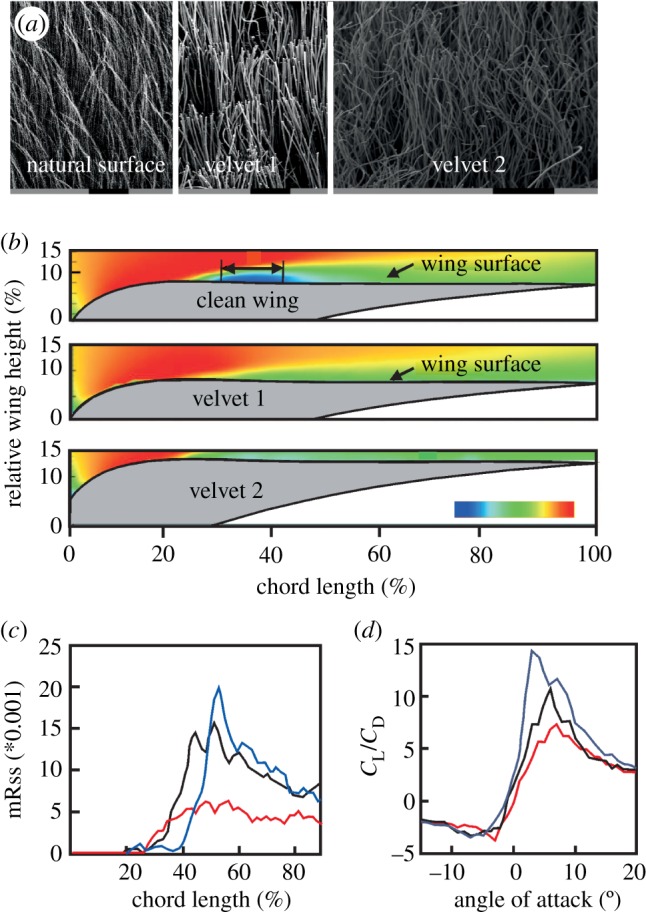Figure 6.

Aerodynamic effects of velvet-like surface. (a) The natural surface, and the artificial structures velvet 1 and velvet 2. The surface of velvet 1 was chosen to mimic the natural surface as much as possible with respect to the softness, length of hairs and density of hairs. Velvet 2 possessed longer hairs. (b) Flow field measured at 0.3 spanwise position, an angle of attack of 6° and a Reynolds number of 60 000 in the different configurations. The inset shows the velocity scale (u/u∞) ranging from −0.2 (blue) to 1.2 (red). The arrows point to the upper wing surface. (c) Maximum Reynolds shear stress (mRss) as a function of chord length for the different wing configurations. (d) The lift-to-drag ratio as a function of the angle of attack for the different wing configurations. CL and CD are the lift and drag coefficients, respectively. Red, velvet 1; black, velvet 2; blue, clean wing. Data in (c) and (d) were redrawn after figs 4a,c,e, 5a and 13d in Winzen et al. [60], respectively.
